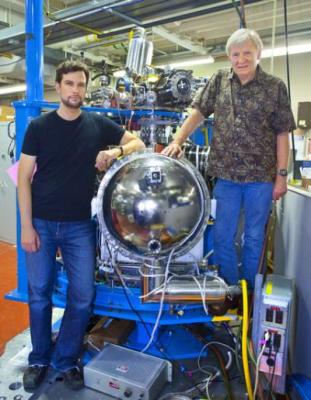Researchers at the Lawrence Berkeley National Laboratory (Berkeley Lab) of the US Department of Energy (DOE) have developed a novel X-ray technique called the hard x-ray angle-resolved photoemission spectroscopy (HARPES).
 Alexander Gray and Charles Fadley, DOE/Lawrence Berkeley National Laboratory
Alexander Gray and Charles Fadley, DOE/Lawrence Berkeley National Laboratory
Charles Fadley, a physicist who led the HARPES development, stated that HARPES can be used to investigate the bulk electronic structure of any material, with fewer impacts of contamination or surface reactions. This technique can study the hidden interfaces and layers that are omnipresent in nanoscale devices and are important to tiny logic elements in the electronics unique memory architecture in spintronics, as well as in highly efficient energy conversion in devices such as photovoltaic cells, he added.
The researchers have reported the successful demonstration of the HARPES technology in a paper titled, ‘Probing bulk electronic structure with hard X-ray angle-resolved photoemission,’ in Nature Materials journal.
Alexander Gray, an affiliate with Berkeley Lab's Materials Sciences Division and a member of Fadley's University of California Davis research group, stated that the key to studying the bulk electronic structure is the utilization of hard X-rays that are X-rays possessing high photon energies to emit photoelectrons from deep under the surface of a solid material. High-energy photons transmit high kinetic energies to the emitted photoelectrons, making them to pass through longer distances inside the solid material, which in turn allow the analyzer to detect more of the signal obtained from the bulk, he said.
For the demonstration of the functionalities of the HARPES technique, the researchers utilized a high intensity undulator beamline at the SPring8 synchrotron radiation facility located in Hyogo, Japan. The Japanese National Institute for Materials Sciences is the operator of the facility. During the study, the HARPES technique allowed the researchers to study up to a depth of 60 Å into the bulk of gallium-arsenide and tungsten single crystals. The researchers used a sophisticated electron spectrometer to measure angles and energies as well as third generation light sources that can produce strong beams of hard X-rays.
Source: http://www.lbl.gov